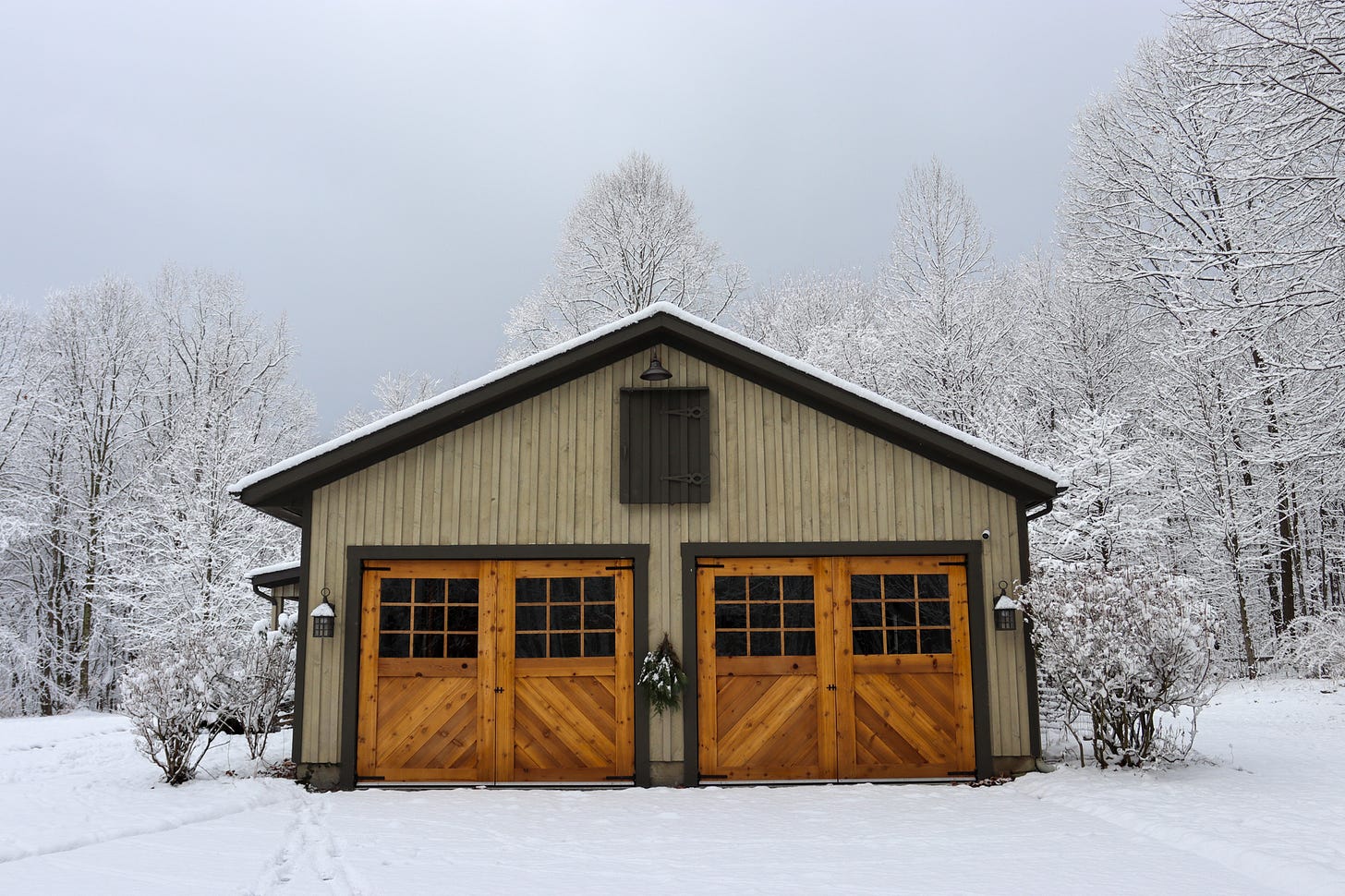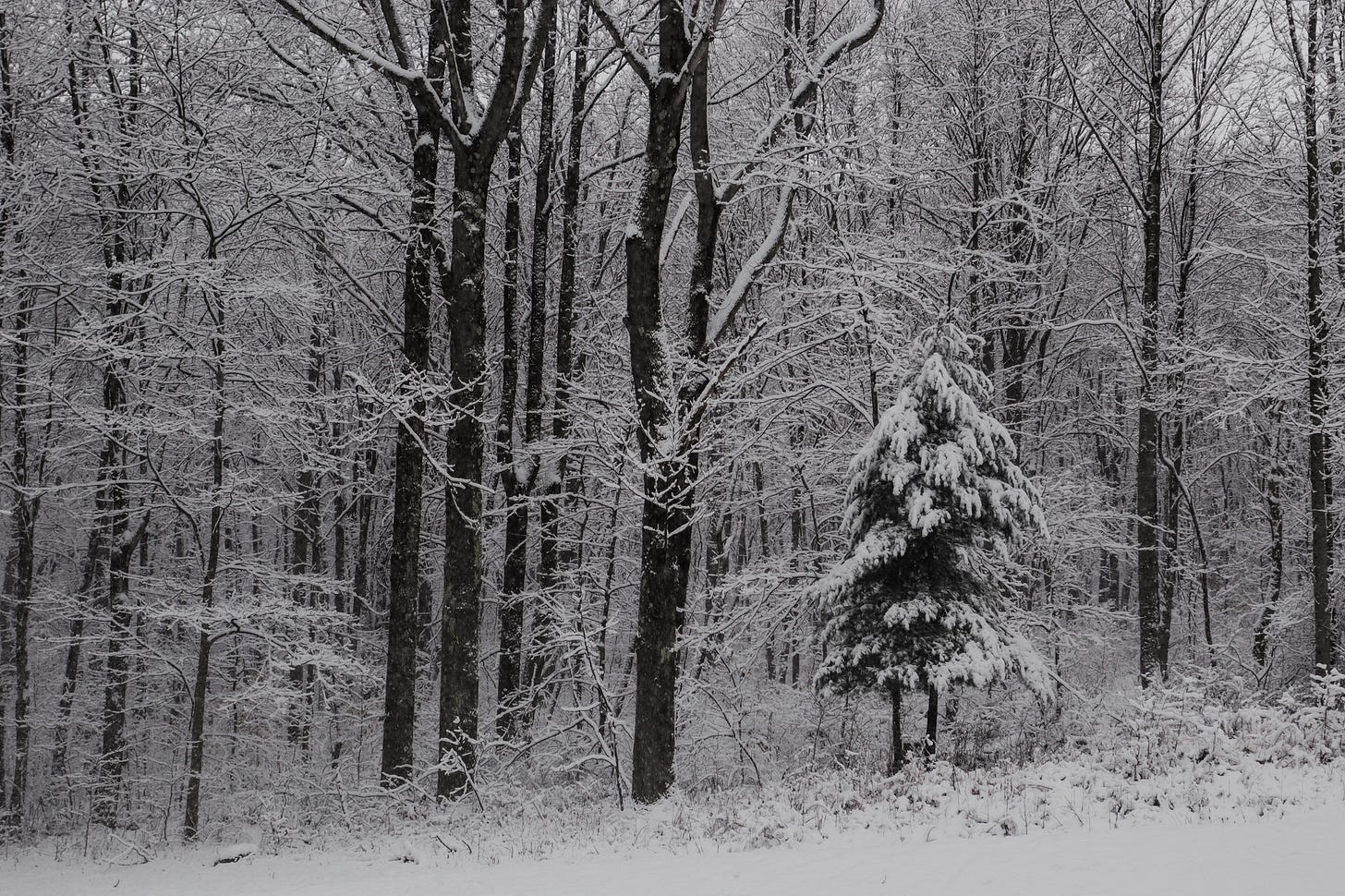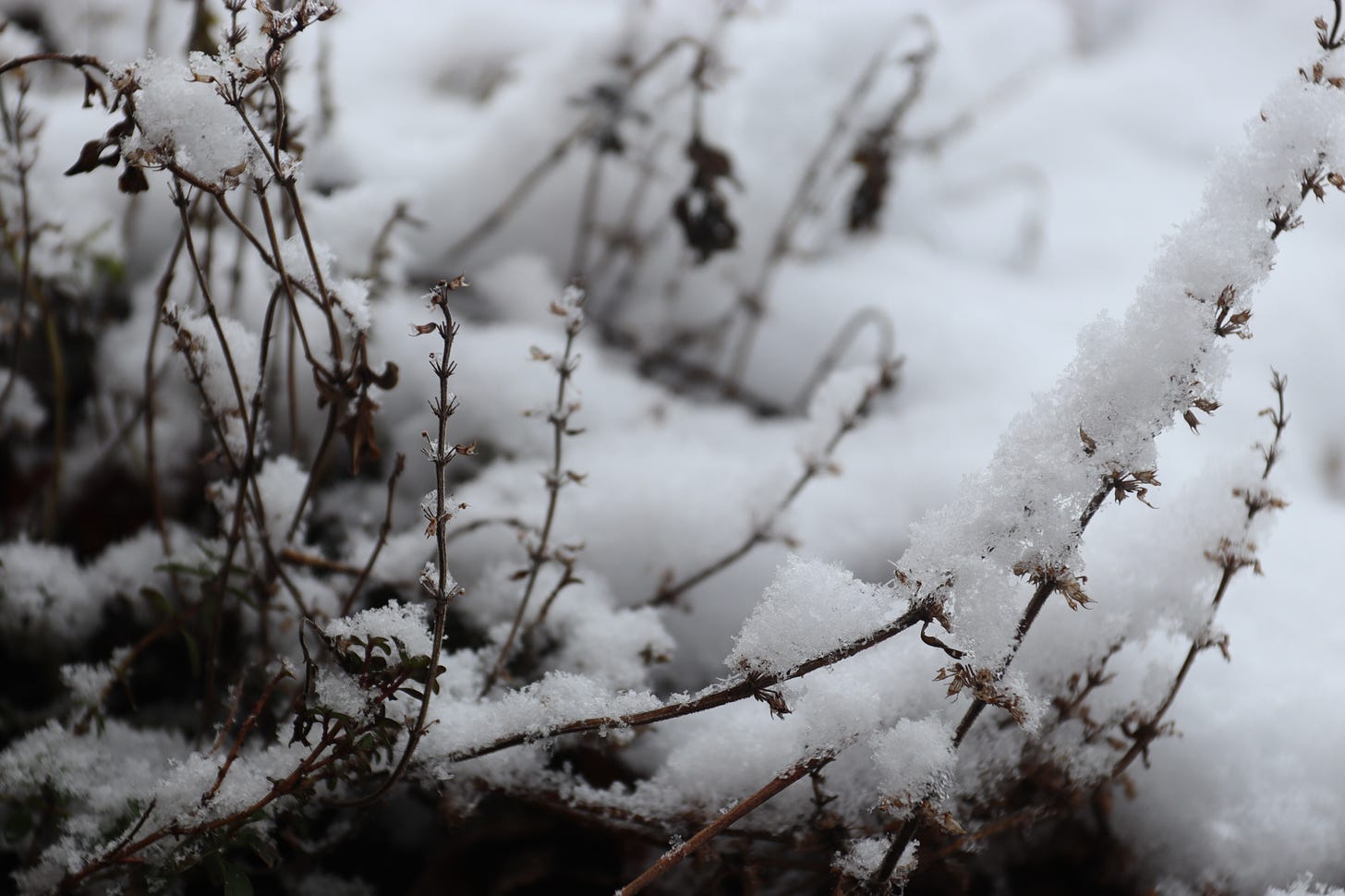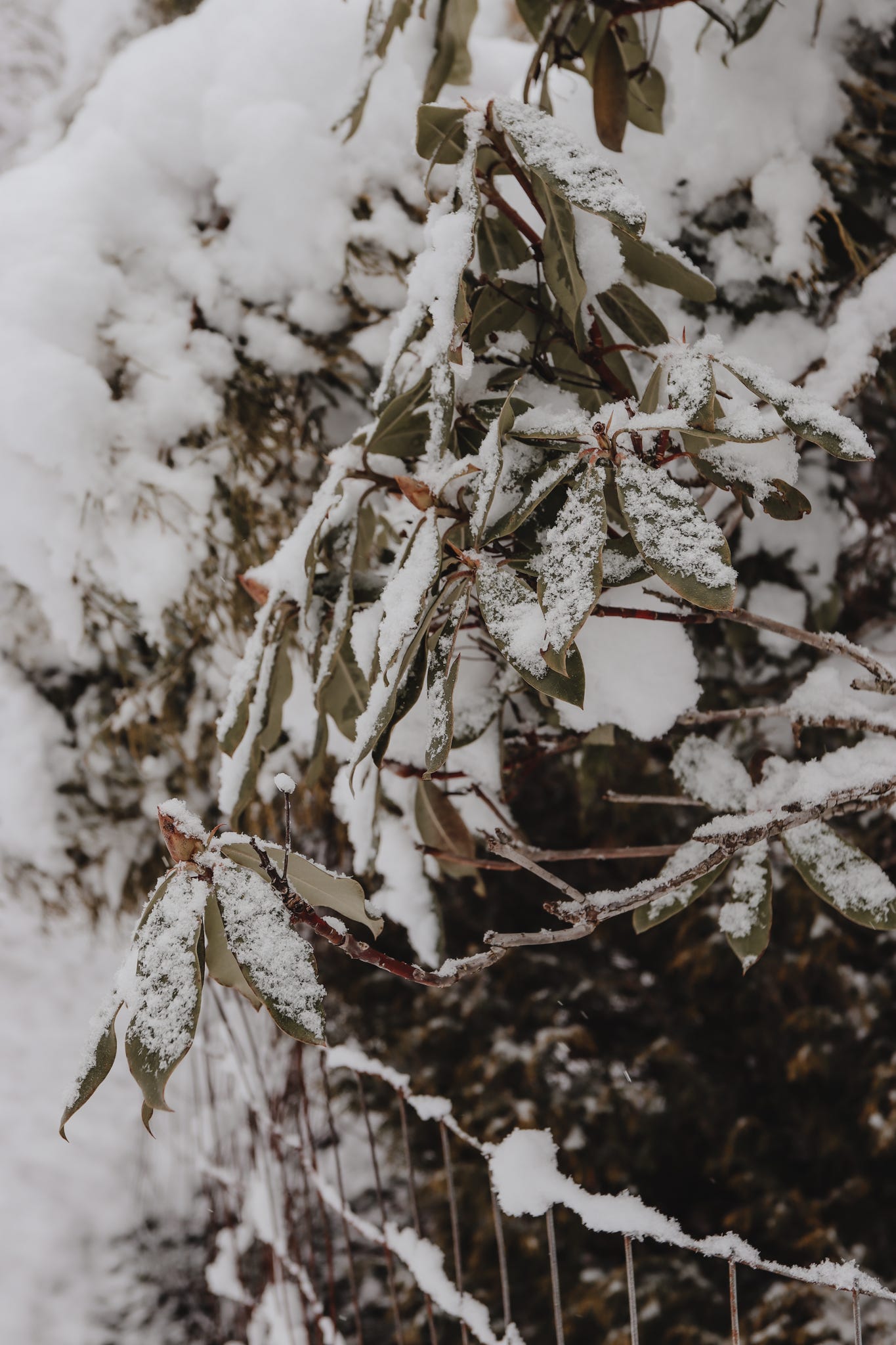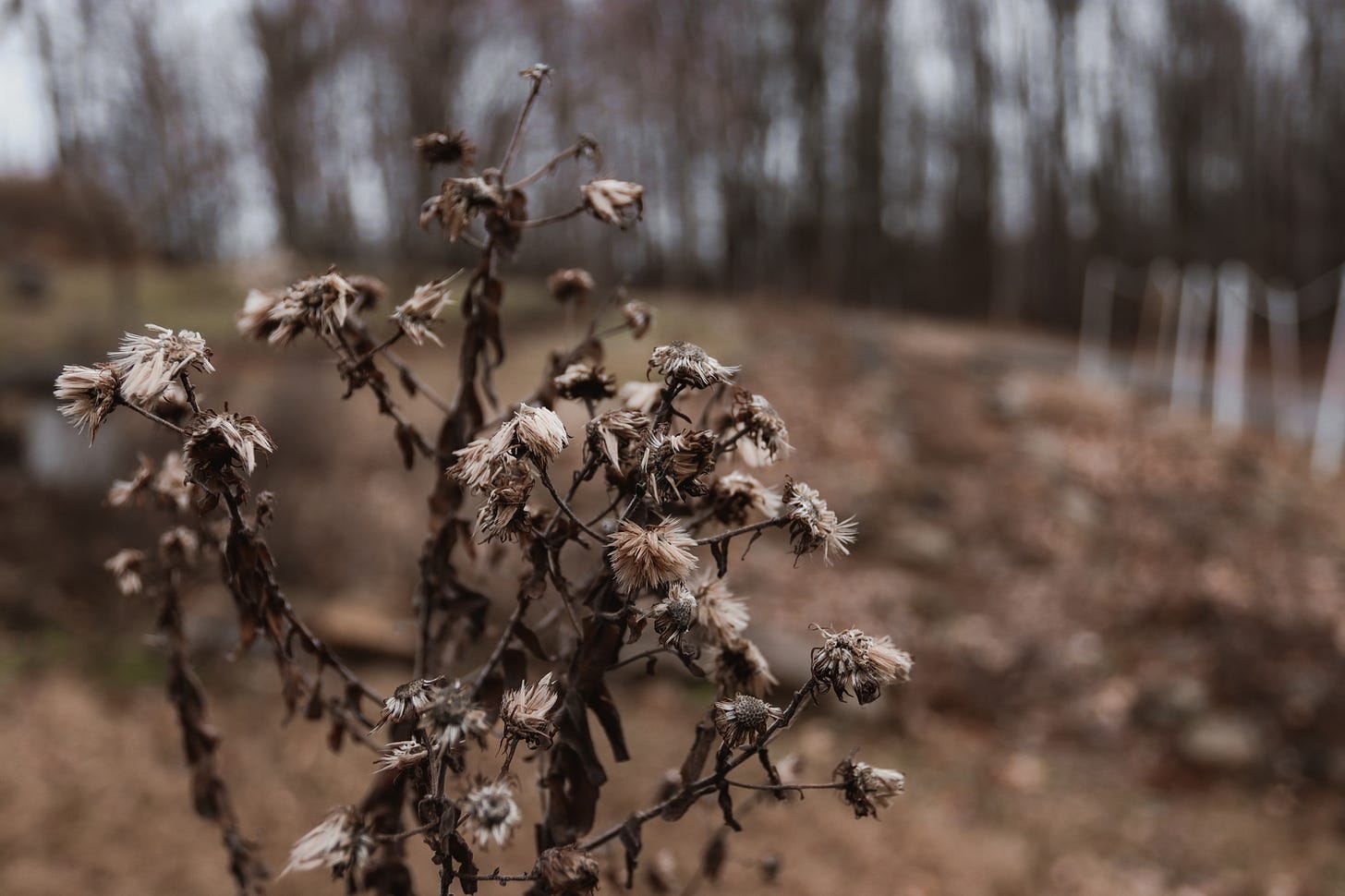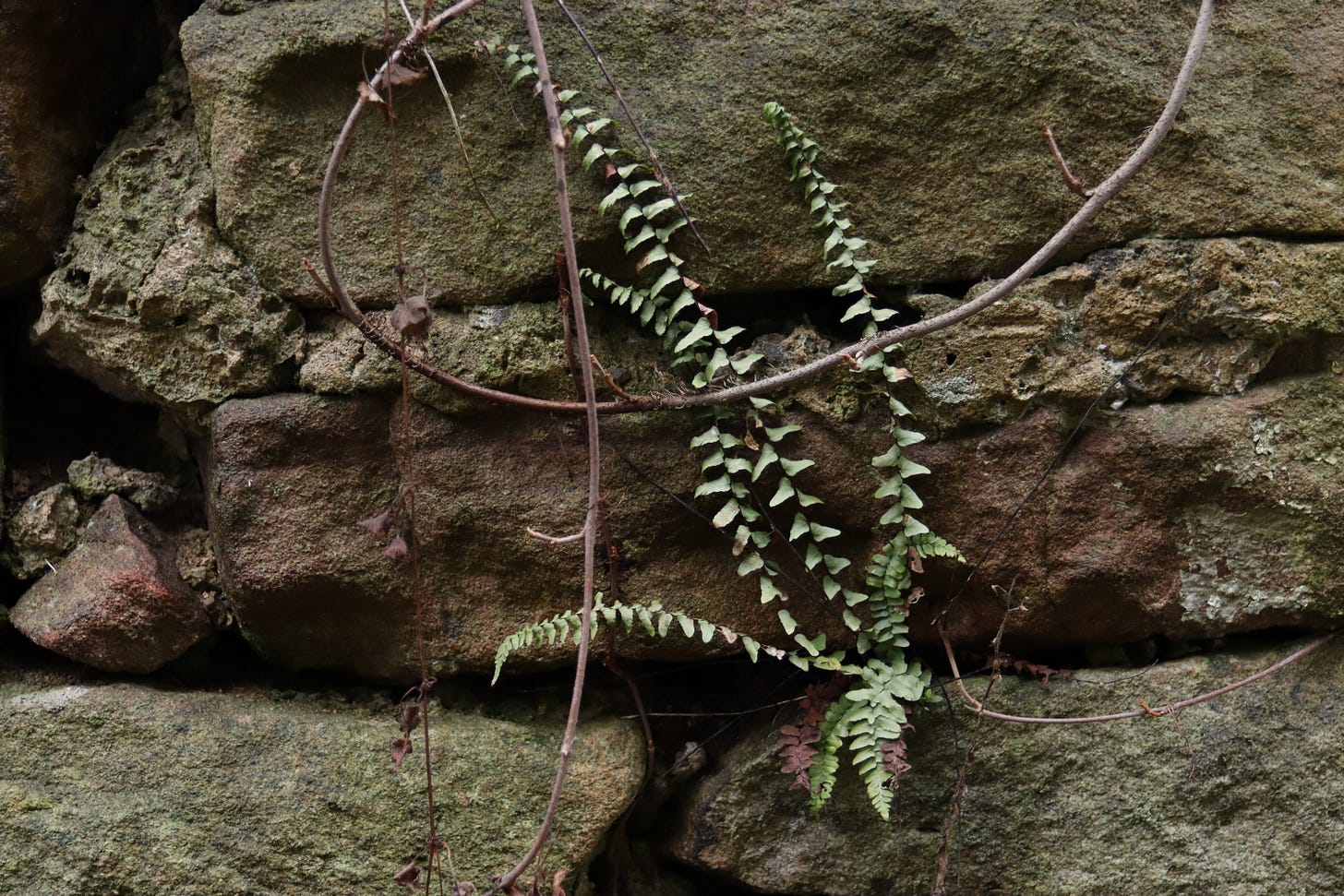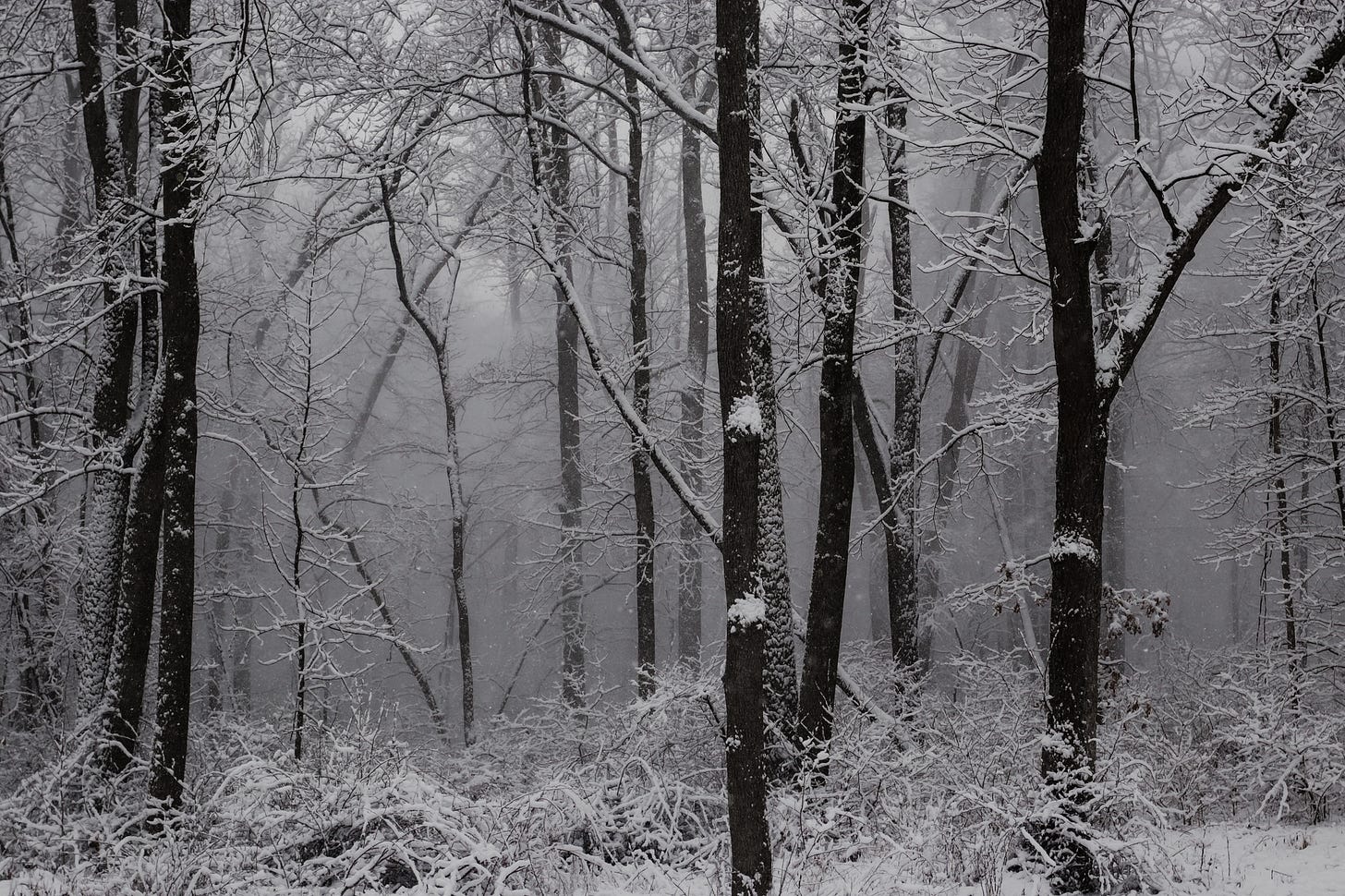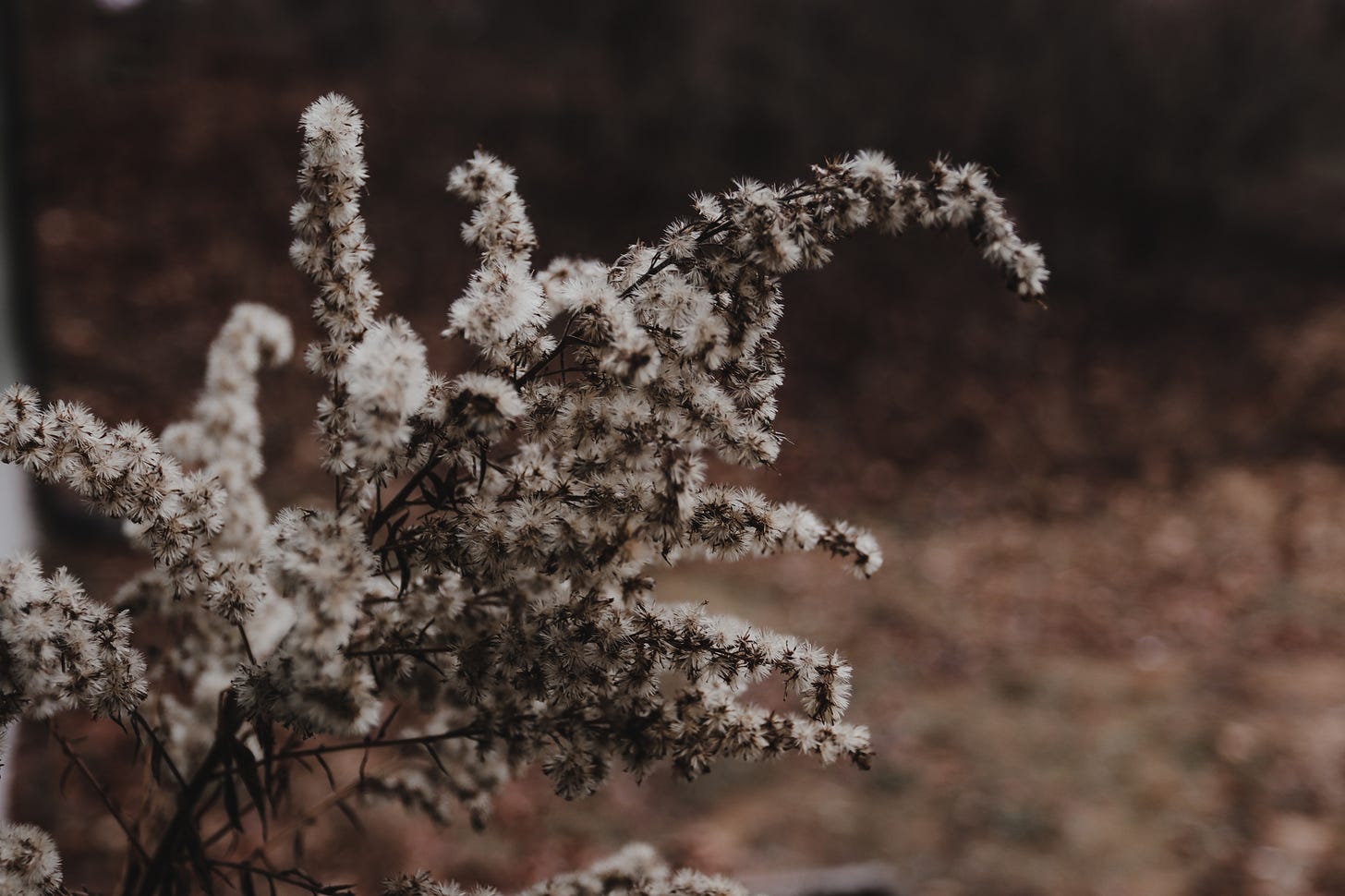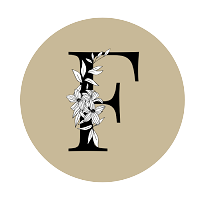
Planning a Cottage Garden with Flowers, Native Plants, and Herbs
Snow has arrived again. The forecast says more on the way with colder temps than we’ve had so far this season. This winter has been quite wet, but warmer than usual (except for that bitter cold sub 0 F set of days in late December).
As I flipped on the porch light one morning at dawn, two deer were lingering around the snow drenched hillside of creeping thyme just outside our house. They browse it every year but it always seems to come back thriving.
However, our deer friends don’t browse everything so evenly. With some of the shrubs at Forest & Flowers Retreat, their grazing approach seems more like an “all you can eat” buffet. This winter, we’re trying some seasonal fence to give the shrubs a chance to thrive, although I want to figure out a good balance to provide things for the deer to eat in the winter while also protecting some of the plants from overgrazing — an experiment in progress.
Seed and plant orders are in (mostly). There’s always more, and I’ll inevitably have forgotten something or learn about a new plant I want to start if it’s not too late in the season to do so. Can you relate?
So many plans. I have spreadsheets for flowers, herbs, native plants, and the home vegetable garden. Columns of notes, Evernote lists week by week, drawers full of seeds. This time in between the end of the last growing season and the beginning of the next one is for making plans — I love the task.
And… it’s winter. I’m settled into this season and feeling grateful for the beauty of heavy snow on everything. Do you notice how the day light feels a little longer too?
Surrounded by plans of the coming season transports me to warmer weather, more sunshine, and the smell of fresh soil. I’m thinking about those new varieties of daffodils and tulips hibernating at the moment — they’re going to be such a vision in early spring.
Speaking of vision… Whether you consider yourself a gardener, plant woman, nature lover, birder, photographer, hiker, or someone who is so grateful for the natural world… have you ever considered how you can live in a way that the earth is grateful for you too?
- Tending a small patch of earth in your backyard with vegetables, herbs, or flowers
- Growing a patio of pots, perhaps starting with a few herbs
- Learning about the native plants in your region, and planting some if you can to add genetic diversity for a more resilient ecosystem (more on that below)
May we all notice where our attention is required for the way forward… because living in harmony with nature is our responsibility and our hope for the future.
What we do will likely be an antidote to what’s popular. But can you feel it in your body that there’s a different way of living in which earth will be grateful for you too?
Of course, we could feel hopeless at the state of the soil on our planet. We could feel overwhelmed of where to begin. And… we can put seeds in the soil and grow something in devotion to the earth that holds us.
Which brings me to this year’s garden.
I thought I’d share plant lists for this season — herbs/native/medicinal plants and flowers. Some I’m growing by seed while others I’ve ordered bareroots. I’m hoping this may expedite your process in growing, or at least give you a starting point even if you’re growing somewhere different (I’m in zone 6a).
I’ve also included the seasonal floral color palettes expected to be blooming from April-October. Here we go.
Herbs | Native | Medicinal Plants
- Bee Balm
- Black Cohosh
- Bloodroot
- Blue Cohosh
- Blue Vervain
- Butterfly Weed
- Goldenseal
- Lavender
- Mayapple
- Mint Mountain
- Milkweed
- Motherwort
- Nettles
- Pipsissewa
- Skullcap
- St. John’s Wort
- Trilliums
- Valerian
Planted in the fall… Russian Sage, Salvia, Anise Hyssop
I’m going to try a winter sowing method shared on the Joe Gardener podcast by Heather McCargo, the executive director of Wild Seed Project. It’s a simple process to sow native seeds, without a lot of equipment or human intervention. She had me at “it’s like being a midwife who trusts the birthing process. It’s the same thing with the native plants — trust that they know.” Check out the episode here for more details if you’re interested.
Flowers
- Amaranth
- Baptisia
- Basil
- Calendula
- Celosia
- Dahlias
- Larkspur
- Marigolds
- Roses (David Austin, Floribundas, Hybrid Teas)
- Rudbeckia
- Snapdragons
- Violas
- Zinnias
Planted last fall… Alliums, Astilbe, Tulips, Daffodils, Sedum, Peonies, Hellebores
As I write this, a box of dried herbs I ordered has just arrived on the doorstep. Inside… Blue Vervain, Echinacea, Skullcap, Elderflowers, and a few more. Most are new to me, and they’re part of my studies in the plant medicine course this year. About to make a cup of tea and become acquainted. Should I tell them I’ve also ordered seeds so I can plant them here too? I can’t imagine a lovelier introduction.
P.S. If I’ve shared something that inspires you, take that as a nudge for how you can tend your own patch of soil. May what we grow be healing for all people and the planet.
In the future, I could also share lists of specific varieties, characteristics of the plants, harvesting notes, a calendar timeline for starting the seeds, planting, etc. Would that be of interest? Click “comment” below and let me know.
